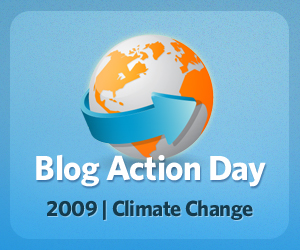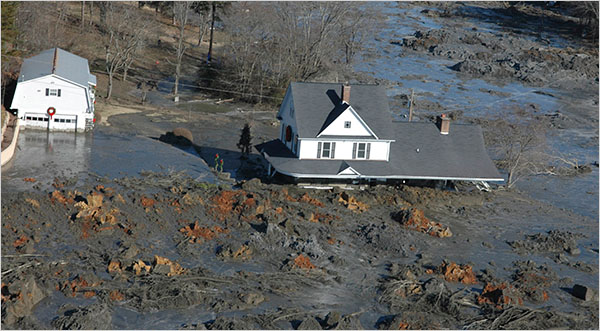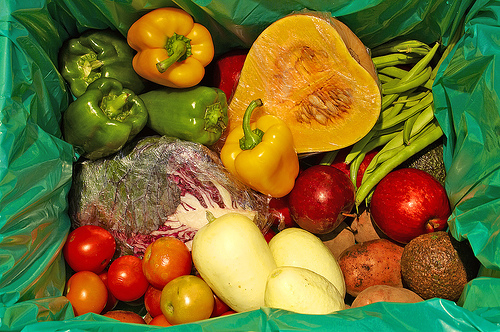By Kirsten Bokenkamp
Did you know that in the United States, the average person throws away around 100 pounds of food scraps per year? According to the USDA, “just over a quarter of the country’s food — about 25.9 million tons — gets thrown in the garbage can every year.”
But food is biodegradable, and decomposes in the same manner no matter where we throw it out, right? Wrong. While we should all try to throw away less food, composting what we do toss-out reduces the impact on the environment.
Any food scraps or leftovers that the dog doesn’t eat decompose in one of two ways. Due to the airtight nature of landfills, the food we throw away with the rest of our trash decomposes in an anaerobic manner (without oxygen). One of the bi-products from anaerobic decomposition is methane, which is a stronger greenhouse gas than carbon dioxide. In the first 120 days in a landfill, every metric ton of food can generate .25 metric tons of methane. On the other hand, food that decomposes aerobically (with oxygen) in a compost pile generates carbon dioxide – which is 25 times less potent than methane. If the U.S. composted the 25.9 million tons of food we throw out each year, the effect would be as if we removed 7.8 million cars from the road!
Because oxygen is the golden ingredient, it is important to allow air to get to your compost through the use of a functionally designed container, through turning your compost, or by using worms as a way to ensure oxygen can do its job. Read more about the basics of composting here.
According to the Composting Council the largest benefit from composting is avoiding the production of methane. But, the benefits don’t stop there. When compost is used in agricultural practices :
• Irrigation needs decreases by 30-70%, due to improved water retention in soil;
• Fertilizer (expensive, and often harmful to the environment) needs decrease by 33-66%;
• Carbon sequestration of soil increases by 6-40 tons of carbon per hectare.
Okay, so for those of you who live in farmhouses – or at least have a backyard and a small garden – composting seems like an easy and beneficial practice. You barely have an excuse! But, this is more of a challenge for the 80% of us in the US who live in urban areas. Where do we put a compost pile, and what do we do with it? Thankfully, there are a few options.
First, you can do as my cousin Elizabeth does in New York City. She freezes her food waste, and brings it to the Union Square Greenmarket once a week, where a farmer she knows gladly accepts it for the wholesome treasure that it is. Next time you are shopping at your local farmers market – ask around! Similarly, you can find a composter that accepts food waste in your area, where you can drop off your compost.
A second option, especially if you have a bit more room, or any indoor or outdoor plants that will benefit from it, is to start a worm bin. Worms love to eat kitchen scraps, and the nutrient-rich castings they produce are great for soil. There are many resources on vermicomposting – a great one is cityfarmer.org, published by Canada’s office of urban agriculture.
The third way of urban composting, and possibly the most important way towards the institutionalization of urban composting, is to tell your city officials that you live in an apartment, that you want to compost, and that you think it is high time for them to implement a curbside composting program. If you don’t think your city is “green” enough to do such a thing, look for inspiration and practical advice from San Francisco – where starting October 21 , it will be illegal not to compost, or other cities including Seattle, Boulder, and Minneapolis-St Paul.
Finally, if composting at home just isn’t going to happen for you, (at least until your city starts providing curb-side composting), talk your employer into it. For instance, the National Press Club has just started to compost, and plans on preventing 2 tons of food per month from heading to the landfill. Some state facilities such as prisons and universities also compost – for example, the state prison facilities in Nashville composts leftovers, and uses the compost on its own 100-acre vegetable garden, and Iowa State University has a compost system that can handle more than 10,000 tons of waste per year.
As an introduction to next week’s Green-up your life! blog – getting children involved – talk to elementary and high school administrators about starting a community compost project. By throwing away less food, composting the food we do throw away, educating our community members, and getting state institutions involved, we will soon be en route to a true environmental revolution!
Read Full Post »
 The Texas Progressive Alliance is ready for the start of the World Series, and it presents to you its weekly highlight reel as we await the first pitch.
The Texas Progressive Alliance is ready for the start of the World Series, and it presents to you its weekly highlight reel as we await the first pitch. Tomorrow – October 24, 2009 – will be the largest day of climate action in the history of the world, and something you don’t want to miss. If you do not yet have anything planned for
Tomorrow – October 24, 2009 – will be the largest day of climate action in the history of the world, and something you don’t want to miss. If you do not yet have anything planned for  If you will be in Houston tomorrow, come join Public Citizen’s Andy Wilson and pastor Brian McLaren at Texas Impact’s
If you will be in Houston tomorrow, come join Public Citizen’s Andy Wilson and pastor Brian McLaren at Texas Impact’s 



 It is blog action day! In case you don’t know, on this day, 15th of October of every year, bloggers from all over the world unite in writing about a common important issue. It started in 2007 by Collis & Cyan Ta’eed. Their first year, they recruited as many as 20,000 bloggers to write about the same issue which was the Environment for that year. It was a great success.
It is blog action day! In case you don’t know, on this day, 15th of October of every year, bloggers from all over the world unite in writing about a common important issue. It started in 2007 by Collis & Cyan Ta’eed. Their first year, they recruited as many as 20,000 bloggers to write about the same issue which was the Environment for that year. It was a great success.


 Do you ever find yourself in the grocery store stuck in a moment of indecision? Should you go with the $2 conventionally grown – flawless enough to win a beauty contest – cantaloupe, or the $4 smaller, uglier, but organic one; a regular tube of toothpaste for $3.50 or the organic brand that costs double the price for half the amount; Wolaver’s sustainably produced organic beer for $9, or good old Lone Star for half the price? The marketplace sure doesn’t make it easy on our wallets to do the earth-friendly thing – that’s for sure.
Do you ever find yourself in the grocery store stuck in a moment of indecision? Should you go with the $2 conventionally grown – flawless enough to win a beauty contest – cantaloupe, or the $4 smaller, uglier, but organic one; a regular tube of toothpaste for $3.50 or the organic brand that costs double the price for half the amount; Wolaver’s sustainably produced organic beer for $9, or good old Lone Star for half the price? The marketplace sure doesn’t make it easy on our wallets to do the earth-friendly thing – that’s for sure.

